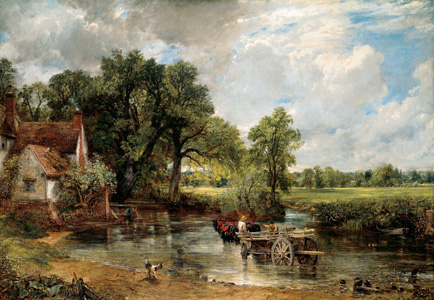A self-portrait drawing of 1806 serves as prelude to Tate Britain’s new exhibition, “Constable: the Great Landscapes”. It is a small image – about nine inches high and six across – but a vivid memento, nonetheless, of the young painter’s forceful and distinctly stubborn personality. He has high cheekbones, a sensual mouth, and slightly receding hair, in compensation for which he has chosen to grow long and luxuriantly curly sideburns. He looks like the hero of a nineteenth century romantic novel. No wonder the girls of East Bergholt, down his way, nicknamed him “the handsome miller”. He views himself not face-on, but in profile, gazing in rapt concentration at something that remains unseen – some corner, perhaps, of his beloved Dedham Vale, that corner of Suffolk which he would spend the best part of a lifetime painting.
The great strength of “Constable: The Great Landscapes” is its admirable straightforwardness. Relatively few works have been selected, around 70 in total, and the emphasis is placed squarely on the artist’s most ambitious pictures, namely his so-called “six-footers” – the series of monumental landscape paintings of the English countryside with which he attempted to awaken his public to radically new conceptions, both of what great art might be, and of what it might express. Because the hang is more or less strictly chronological, the exhibition unfolds according to the rhythms of Constable’s own life. Walking through it is like reading an autobiography – albeit one largely written in code, full of mysteries, riddles and secrets.
Constable was thirty years old when he drew the self-portrait with which the exhibition opens. He was an extremely slow developer and may have felt, at the time, that there was a real danger that he would never amount to more than a perpetual student. He had studied...

Constable: The Great Landscapes, at Tate Britain 2006
04-06-2006

